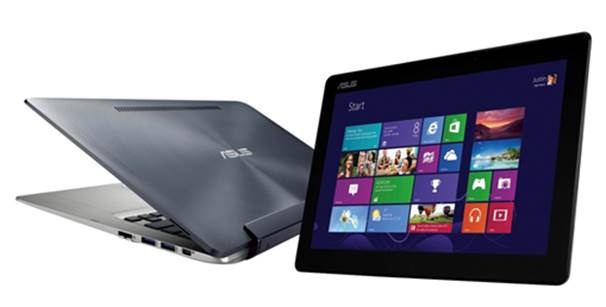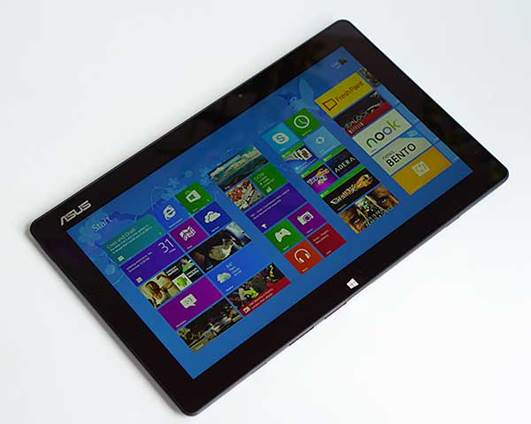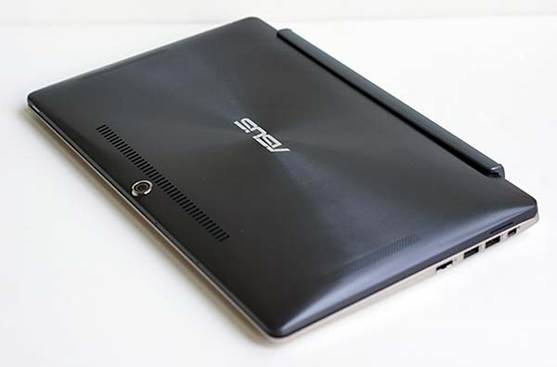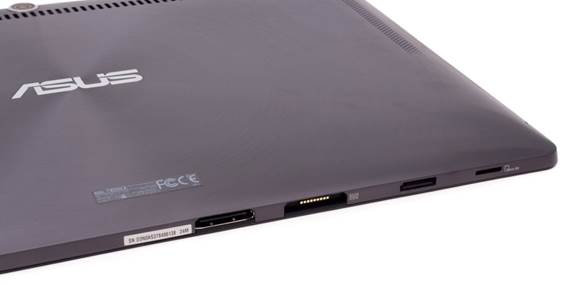At its heart, the Transformer Book is a
mixture between a laptop and a tablet (a huge tablet, we might add). So it is
reasonable to look like the lovechild between ASUS' Zenbook Prime Ultrabooks and
its various Transformer products.
For a while, it seems that Asus'
Transformer Book has been turned into vaporware: after debuting to much
fanfare, it encountered numerous delays, and even missed the crucial holiday
shopping season. Now, it was finally here, priced at $1,499 with a Core i7
processor, a 13.3-inch screen (1080p) and a detachable keyboard dock housing
both a spare battery and a 500GB hard drive. The problem is the timing: Intel
is about to launch its new Haswell chips, and here's the Transformer Book,
appeared a crisis price and an year-old CPU.

Asus
Transformer Book
It should be relatively easy to tell you
just wait for a refresh, which is how we've been ending all of our PC reviews
in the weeks leading up to this year's Computex. But it is worth investigating
whether the Transformer Book (ie TX300) is an attractive idea. Although we have
seen many hybrid tablets (Surface Pro, etc.), they've mostly had smaller
11-inch screens. So what happens when you take that form-factor and stretch it to
accommodate a larger screen - and a wider keyboard? And how does it compares
with all current convertible options, such as the Lenovo IdeaPad Yoga 13 or the
Dell XPS 12? Let's find out.
Look and Feel
At its heart, the Transformer Book is a
mixture between a laptop and a tablet (a huge tablet, we might add). So it is
reasonable to look like the lovechild between ASUS' Zenbook Prime Ultrabooks
and its various Transformer products. The tablet itself has an aluminum back
similar to the Infinity tablet, done up in a familiar dark grey. Meanwhile,
just like last year's Zenbook laptops, the keyboard dock takes on a pale
champagne color, which carries over to both the main deck and the back side.
Basically, it's a two-tone, black-and-white cookie of a notebook, with dark
metal blanketing one half and a lighter material covering the bottom. It is an
unusual, but effective choice.

At
its heart, the Transformer Book is a mixture between a laptop and a tablet (a
huge tablet, we might add).
Once we reacquainted ourselves with the
familiar design language, we began to realize how heavy this thing is. In
total, it weighs approximately 4.2 pounds much more than those 13-inch touch
laptops - with the tablet and dock each weighing in at 2.09 pounds.
It seems strange that the dock is as heavy
as the tablet, but consider this: the keyboard houses 3200mAh battery and 500GB
hard drive to complement the 128GB SSD inside the tablet. (HP's 13-inch Split
x2 hybrid has a similar setup). Perhaps because of the additional features, the
Transformer Book's keyboard also accounts for much of the total thickness as
well: the two together measure a fairly plump 0.92 inch thick, but the tablet
itself is only 0.4 inches thick. That's not bad considering there's a Core i7
processor inside, along with a fan to help keep it cool.

The
keyboard houses 3200mAh battery and 500GB hard drive to complement the 128GB
SSD inside the tablet.
That said, you will probably be most
impressed with the Transformer Book if using it in tablet mode. As an
independent tablet, it is 3.3 pounds lighter than the Yoga 13 or 3.35 pounds
lighter than the Dell XPS 12. Relatively speaking, it's more comfortable to
use, though it's still a little unwieldy. And as a laptop, the Transformer Book
is heavier than either of those machines. A lot more. And you have to wonder if
it's worth it. How often are you going to use your 13-inch Ultrabook as a
tablet? And it's really important that your PC take on the same form factor as
an iPad or an Android tablet? Both the Yoga 13 and the XPS 12 have hands-free
tablet modes, and they also have room for a larger keyboard. It seems that we
have forgotten one or may be two good reasons to go with the Transformer Book:
you want the spare 500GB hard drive or you like the idea of having a spare
battery. In other words, there are other form-factors that accomplish the same
thing as the Transformer Book, although with greater emphasis on the laptop
piece.

That
fan sits on the back edge of the tablet, right below the 5MP/1080p rear camera.
Moving on with our tour, that fan sits on
the back edge of the tablet, right below the 5MP/1080p rear camera. (Sorry, no
LED flash). Around the back, you will also find 2 speakers, with one grille on
each end. Holding the tablet in landscape mode, you have the volume rocker on
the left, along with a micro-HDMI socket and a headphone jack. On the right,
there's an exposed microSD slot. At the bottom are all the docking connectors
that latch into the keyboard.
There is also one proprietary charging port,
which you will see reflected on the dock. Naturally, a common connector means
you can use the same cable for charging both devices, and at the same time.
Finally, the power/lock button is on the top, right where you expect. The
interesting thing is that you need to press it down to open the device, as you
would do with a real tablet, which really is a none-keyboard laptop.

There
is also one proprietary charging port, which you will see reflected on the dock
It includes everything you might need in
tablet mode. Meanwhile, the dock is home to (almost) all the ports you could
want in one laptop (yes, it includes Ethernet jack). In addition to the wired
connection, there's a large-sized SD card reader, 2 USB ports, mini-VGA and
DisplayPort. The only thing missing is HDMI, but fortunately there are many
adapters that you can buy if one simple TV connector is what you are looking
for.
Finally, you will definitely want to know
what comes in the box. First of all, you have one simple black box, with 2
dongles: USB-to-Ethernet and mini-VGA-to-VGA. Asus has packaged those
accessories over the years, as any loyal customers will tell you, and we are
glad that the company is keeping it up.